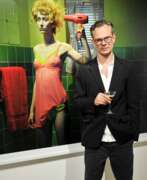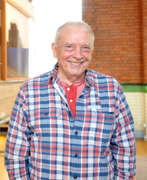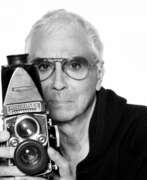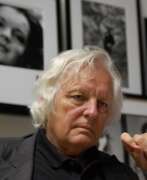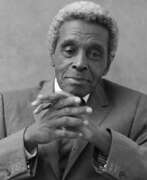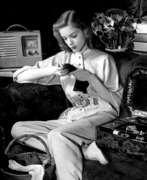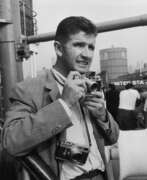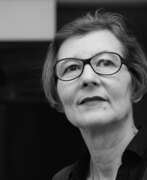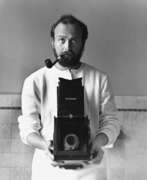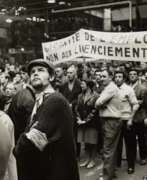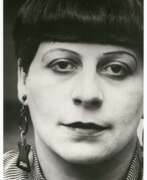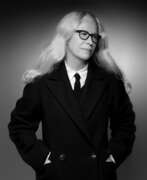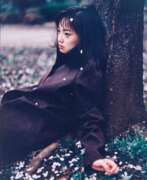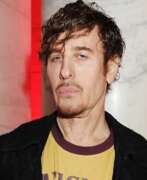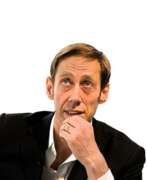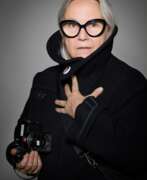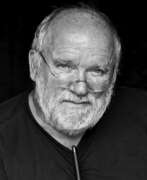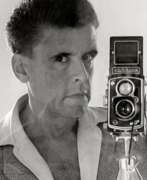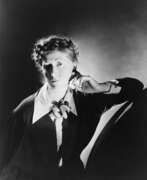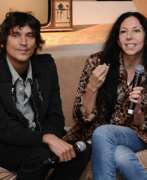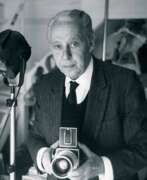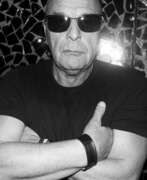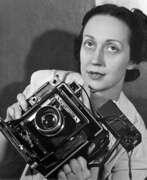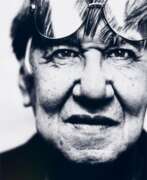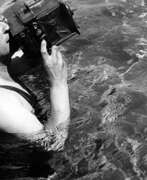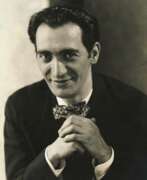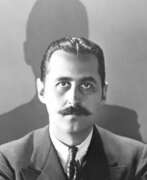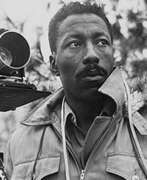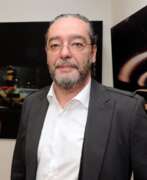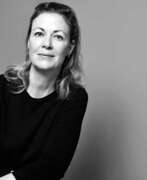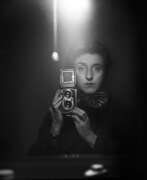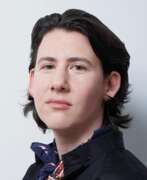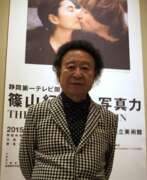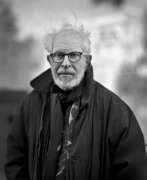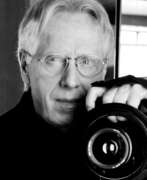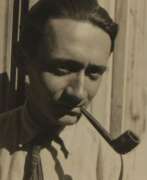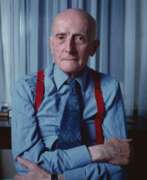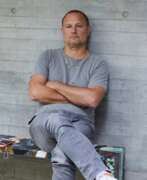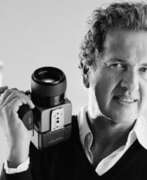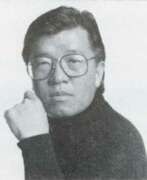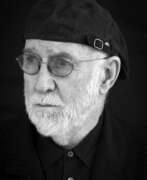Fashion photography


Herbert Ritts Jr. was an American fashion photographer and director known for his photographs of celebrities, models, and other cultural figures throughout the 1980s and 1990s. His work concentrated on black and white photography and portraits, often in the style of classical Greek sculpture, which emphasized the human shape.
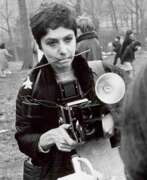

Diane Arbus was an American photographer. Arbus's imagery helped to normalize marginalized groups and highlight the importance of proper representation of all people. She photographed a wide range of subjects including strippers, carnival performers, nudists, people with dwarfism, children, mothers, couples, elderly people, and middle-class families.
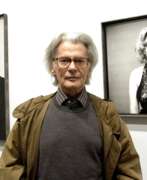

Richard Avedon was an American photographer and artist known for his iconic portraits and fashion photography.
Avedon began his career as a photographer in the late 1940s, working as a freelance photographer for magazines such as Harper's Bazaar and Vogue. He soon became known for his distinctive style, which was characterized by his use of simple, uncluttered backgrounds and his ability to capture the essence of his subjects.
Throughout his career, Avedon photographed some of the most famous people of his time, including Marilyn Monroe, Andy Warhol, and The Beatles. He was also known for his fashion photography, and his work appeared in many fashion magazines, including Harper's Bazaar and Vogue.
Avedon's work was often controversial, as he challenged traditional notions of beauty and fashion. He was known for his willingness to push boundaries, and his work was often seen as a reflection of the social and political issues of his time.
Today, Avedon is regarded as one of the most important photographers of the 20th century, and his work continues to inspire artists and photographers around the world.
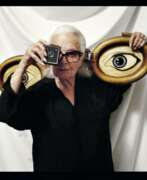

Lillian Bassman was an American photographer and artist.
A magazine art director and fashion photographer, she became famous in the 1940s and '50s for her high-contrast, dreamy portraits of sylph-like models. Bassman's unique graphic style of photography illustrates the feminine mystique and glamour, as well as the boldness of an artist who blurs the lines between fashion photography and fine art. Working as art director for Bazaar magazine in 1945, she helped launch the careers of many of the century's most famous photographers.
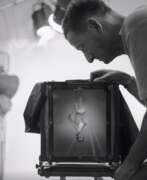

Erwin Blumenfeld was a German-born photographer and artist who is best known for his fashion photography and experimental work in the mid-20th century. He was began his career as an artist, working in painting, drawing, and collage.
In the 1930s, Blumenfeld fled Germany and settled in Paris, where he became a successful fashion photographer. He worked for Vogue and other high-profile magazines, creating iconic images of models and celebrities such as Marilyn Monroe, Elizabeth Taylor, and Grace Kelly.
Blumenfeld was also known for his experimental and avant-garde work, which often involved techniques such as photomontage, solarization, and multiple exposures. He saw photography as a means of artistic expression and used it to explore ideas about identity, beauty, and the nature of reality.
Blumenfeld's legacy as an artist and photographer continues to influence contemporary fashion and art. His innovative techniques and distinctive style continue to inspire new generations of artists, and his work is recognized as a significant contribution to the history of photography.


Guy Bourdin was a French photographer and artist who is best known for his innovative and provocative fashion photography in the mid-20th century. He was began his career as a painter before turning to photography.
Bourdin's photographic style was characterized by his use of bold colors, surreal imagery, and provocative themes. He often incorporated elements of eroticism and violence into his work, challenging traditional ideas about beauty and femininity.
Bourdin's photographs were widely published in fashion magazines such as Vogue, and he became known for his collaborations with fashion designers such as Charles Jourdan and Issey Miyake. His work was highly influential, and he is considered one of the most important fashion photographers of the 20th century.
Bourdin's legacy as an artist and photographer continues to inspire new generations of artists. His innovative techniques and bold aesthetic continue to push the boundaries of fashion photography and have had a significant impact on contemporary art and culture.


Pegg Clarke was an Australian professional fashion, portrait, architectural and society photographer whose work, published frequently in magazines, was referred to by historian Jack Cato as being of "the highest standard." Her work featured in prominent early 20th century Australian magazines. By the end of World War I Clarke was considered one of the leading photographers in Melbourne. She was respected for her fashion photography, ger high society portraits, especially of debutantes and brides and their portraits of visiting celebrities. Clarke was not trained at the National Gallery School, though she drew as well as photographed, but was involved with the Melbourne Society of Women Painters and Sculptors. In her personal work, mostly of landscape, Pegg was a Pictorialist.


Clifford Coffin, a visionary American fashion photographer, is often remembered as one of Vogue magazine's greatest yet underrecognized talents. His work, particularly between the 1940s and 1950s, redefined the aesthetics of fashion photography, blending elegance with a bold, innovative approach that left a lasting impact on the industry. Coffin's photography for Vogue not only captured the fashion of the time but also the essence and mood, making each piece a timeless work of art. His unique ability to spot and showcase talent, as demonstrated by his discoveries and the iconic figures he photographed, further cemented his status in the fashion world.
Coffin's style was characterized by its artistic flair and meticulous attention to detail, qualities that set his work apart during the golden age of fashion photography. Despite facing personal challenges, including battles with addiction, Coffin's legacy is a testament to his extraordinary talent and contribution to the field of photography. His photographs remain celebrated for their beauty and artistic value, undiminished by time or the personal troubles he endured.
His contributions went beyond mere photography; Coffin was instrumental in shaping the visual narrative of fashion, making bold choices in models, settings, and themes that often pushed the boundaries of the conventional fashion imagery of his time. Despite his significant contributions, much of Coffin's work was lost in a studio fire in the mid-1960s, and he never oversaw a gallery retrospective or published a monograph, which has perhaps contributed to his being less well-known than some of his contemporaries.
Coffin's work did not just live in the pages of magazines; it influenced generations of photographers and designers, encouraging a more adventurous and expressive approach to fashion photography. The legacy of his work continues to inspire, serving as a pivotal reference point for both historical and contemporary fashion photography studies.
For those interested in exploring the depth and breadth of Clifford Coffin's influence in fashion photography, a wealth of his work and contributions can be explored through various archives and exhibitions dedicated to his art. His photographs, characterized by their timeless elegance and groundbreaking creativity, continue to captivate audiences and hold a place of distinction in the history of fashion photography.
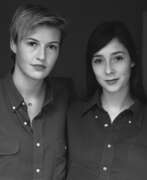

Elsa and Johanna are a creative duo of photographic artists and filmmakers.
They were finalists for Prix HSBC pour la photographie 2016 and won the second Prix Picto de la mode 2017.
The duo's clients include well-known publications such as Le Temps, Boycott Magazine, L'Express 10, Crash Magazine, Etro, Boucheron and Apple.


Fernand Fonssagrives, born Fernand Vigoureux, is a French and American fashion photographer.
As a young man he moved to New York and became one of the world's leading fashion photographers of the 1940s and 1950s, shooting for Vogue, Town and Country and Harper's Bazaar magazines. Fonssagrives' iconic works are photos of nude women with patterns of sun reflections on their skin. In a unique partnership with his wife, legendary model Lisa Fonssagrives, he created his most significant works.
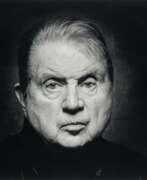

Francis Giacobetti is a French photographer and filmmaker.
In 1984 he began a series of celebrity photographs that included Federico Fellini, Stephen Hawking, Françoise Sagan, Philippe Starck, Yehudi Menuhin and others, over 200 in all. Known for being on the border between photography and painting, between craft and art, Francis Giacobetti has puzzled and delighted art masters with his series (Zebras, Iris, Anthem, numerous Bacon portraits). Like many photographers, he celebrates the beauty and perfection of the human body.
Giacobetti is also the director of the film Emmanuelle l'Antivierge (1975).
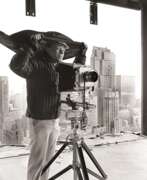

Ormond Gigli was an American photographer best known for his fashion and portrait photography. He was began his career as a freelance photographer in the 1940s, eventually becoming a staff photographer for several major publications, including LIFE, Time, and Harper's Bazaar.
Gigli's work is characterized by its striking use of color and composition, often featuring models in elaborate poses and settings. One of his most famous images is "Girls in the Windows," a photograph he took in 1960 of models posed in the windows of a Manhattan building slated for demolition.
Throughout his career, Gigli received numerous awards and accolades for his work, including the Lifetime Achievement Award from the American Society of Media Photographers in 2003. His photographs have been exhibited in galleries and museums around the world, and are held in the collections of many major institutions, including the Museum of Modern Art in New York and the National Portrait Gallery in Washington, D.C.
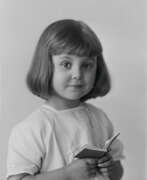

Ruth Miriam Hollick was an Australian portrait and fashion photographer who was one of Melbourne's leading Pictorialist photographers during the 1920s. There is evidence that Hollick was experimenting with photography in a home darkroom by 1907. The following year, she set herself up as a freelance photographer who toured rural areas of the state of Victoria, making portraits of families, especially children. She worked mostly outdoors in natural light with a field camera. By World War I, she had shifted into studio photography. It was in this period that Hollick developed a reputation for skillful use of both natural and studio lighting and for stylish compositions, often setting her subjects against plain backgrounds. She specialized in portraits of society figures and celebrities, as well as fashion photography for use in advertisements.
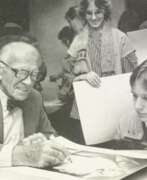

Horst P. Horst, a German-American fashion photographer, is renowned for his significant contributions to the art and fashion industry. Born in 1906, Horst's career spanned several decades, during which he became famous for his distinct style that skillfully blends elements of surrealism, classicism, and avant-garde artistry. His work, characterized by meticulous preparation and an innovative use of lighting, frequently avoided the use of filters and shadows, focusing instead on the subject with an almost architectural precision.
Horst P. Horst's legacy in fashion photography is underscored by his famous portraits, including the iconic 1942 image of Marlene Dietrich, and his exploration of the high society lifestyle through his collaborations with Vogue editor Diana Vreeland. These projects featured portraits of illustrious figures from the realms of royalty, art, fashion, and high society, such as Andy Warhol, Jacqueline Kennedy Onassis, and Yves Saint Laurent, showcasing Horst's ability to navigate the glamorous and intimate worlds of his subjects.
His work extended beyond portraiture to include interior design photography, as seen in his documentation of notable interiors for magazines like House & Garden and Vogue. Horst's photographs often served as a bridge, introducing the public to the works of contemporary artists and designers through his editorial and commercial assignments.
Throughout his career, Horst received critical acclaim, with major retrospectives of his work being held at prestigious venues such as the International Center of Photography in New York, the Louvre in Paris, and the National Gallery in London. These exhibitions highlighted his contributions to fashion, portraiture, and art photography, cementing his status as one of the most influential photographers of the 20th century.
For those interested in the evolution of fashion photography and the intersection of art and culture, Horst P. Horst's work remains a significant point of study and admiration. Collectors and experts in art and antiques are encouraged to explore his extensive portfolio, which continues to inspire and influence the fields of photography and fashion design.
If you wish to stay informed about upcoming sales and auction events related to Horst P. Horst, consider signing up for updates. This subscription will ensure you're at the forefront of the market for his enduring and captivating works.
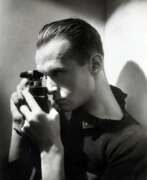

Baron George Hoyningen-Huene was a fashion photographer of the 1920s and 1930s. He was born in the Russian Empire to Baltic German and American parents and spent his working life in France, England and the United States.


Walde Huth, née Waldberta Huth, is a German photographer known for her street photos and portraits of famous people and fashion models.
She graduated from the State School of Applied Arts in Weimar, and after World War II she became a freelance photographer doing portrait and art photography. Walde Huth is primarily known for her fashion shots of the '50s, she also took unique stills and advertising photos, and created portraits of famous contemporaries. Her iconic fashion shots were taken in Paris. She shot the most famous models of her time not in the studio, but on location in the city, in front of the Eiffel Tower, along the Seine River, in contrast to the architecture and street life.
Walde Huth was an exceptional woman, a creative artist and a versatile photographer.
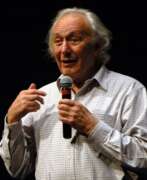

William Klein was an American-born French photographer and filmmaker noted for his ironic approach to both media and his extensive use of unusual photographic techniques in the context of photojournalism and fashion photography. He was ranked 25th on Professional Photographer's list of 100 most influential photographers.
Klein trained as a painter, studying under Fernand Léger, and found early success with exhibitions of his work. He soon moved on to photography and achieved widespread fame as a fashion photographer for Vogue and for his photo essays on various cities. He directed feature-length fiction films, numerous short and feature-length documentaries and produced over 250 television commercials.
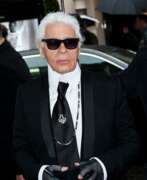

Karl Otto Lagerfeld is a German fashion designer, designer, photographer, collector and publisher.
Karl found himself in the fashion world by chance, as he planned to work as an illustrator. At the age of 21, he entered the 1954 International Woolmark Prize and won first place for his sketch of a coat, which launched his career. For the next 65 years, fashion remained the foundation of his work, although he spent his life actively expressing himself in other areas of art.
In 1987, Karl shot his first advertising campaign and developed a passion for photography. In 1999, he opened his own photography studio in Paris, where he has taken countless images of the world's greatest figures in art and fashion. Many of Carl's photographs have also been used in art books. Karl was also a master of self-portraits: throughout his life he photographed and painted his iconic image.
A passionate bibliophile (his personal library numbered 300,000 volumes), Lagerfeld merged his photography studio with the 7L bookstore and later opened EDITIONS 7L, a publishing house specializing in books on design and photography. He was also involved in various interior design and architecture projects.
In 1965 Lagerfeld took over the Italian fashion house Fendi, where he created collections of leather and fur garments, and in 1983 he became the artistic director of the French house Chanel - with these companies he had lifetime contracts. In 1984, Lagerfeld founded his own fashion house, Karl Lagerfeld Impression.
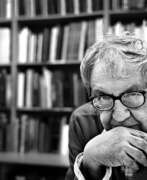

Saul Leiter was an American photographer and fashion photographer, one of the pioneers of what was later called the New York School of Photographers in the 1940s and 1950s.
Saul Leiter began doing color and black-and-white street photography in New York City in the 1940s. He had no formal training in photography, but the genius of his early work was quickly recognized. His main subjects were street scenes and his small circle of friends. Leiter made a huge and unique contribution to photography during his prolific period in New York in the 1950s. His abstract forms and radically innovative compositions have a painterly quality that stands out among the work of his New York School contemporaries. His sense of color and densely compressed urban life represents a truly unique vision of those times. Leiter is now considered a pioneer of early color photography and is noted as one of the outstanding figures in postwar photography.
For 20 years Leiter also worked as a fashion photographer and was published in leading fashion magazines.
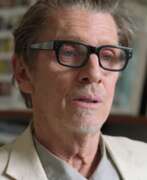

Christopher Makos is an American photographer and artist living and working in New York City.
Makos has traveled extensively in Europe, studied architecture in Paris, and studied with photographer Man Ray. In 1977 he met media artist and pop art star Andy Warhol and has been friends, traveled with him and photographed him extensively ever since. Makos published several acclaimed books on Warhol, and the latter called Makos "the most modern photographer in America."
In addition to him, Makos took photographic portraits of many art stars, including Elizabeth Taylor, Salvador Dali, John Lennon and Mick Jagger. His work has been published by many of the world's most famous magazines.
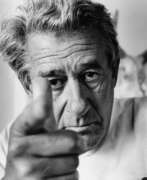

Helmut Newton (born Helmut Neustädter) was a German-Australian photographer. The New York Times described him as a "prolific, widely imitated fashion photographer whose provocative, erotically charged black-and-white photos were a mainstay of Vogue and other publications."
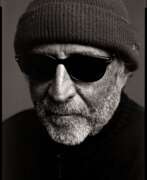

Jacques Olivar is a Moroccan fashion and advertising photographer and filmmaker.
In his youth he worked as a pilot of passenger air transport, but by the age of 40 he finally realized that photography is his vocation. And he became successful quite quickly. Since 1987, fashion photography has become his main profession. Jacques Olivar works for leading fashion magazines and has won many awards.
Emotion, elegance and beauty are the invariable key elements underlying Jacques Olivar's photographic works. The black and white images create an atmosphere of neorealism, while the color images seem to reference the heyday of cinema and build on the idea of the "American Dream".
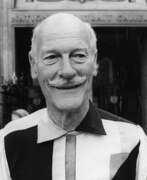

Norman Parkinson was a renowned British photographer who is considered one of the most influential fashion photographers of the 20th century. Parkinson began his career in the 1930s and continued to work until his death.
Throughout his career, Parkinson worked for numerous fashion magazines, including Vogue, Harper's Bazaar, and Queen. He was known for his use of vibrant colors and his ability to capture his subjects in dynamic poses and interesting settings. Parkinson's photographs often had a sense of humor and playfulness, and he was known for his ability to put his models at ease, resulting in natural and spontaneous photographs.
Parkinson's work has been exhibited in galleries and museums around the world, and he has been the subject of numerous books and documentaries. He received numerous awards throughout his career, including the Royal Photographic Society's Centenary Medal in 1985.
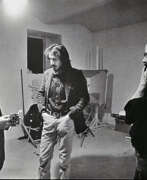

Irving Penn was an American photographer celebrated for his influential work in fashion photography, portraits, and still lifes. Penn's journey into photography began with a background in painting and design, studying at the Philadelphia Museum School of Industrial Art. He moved to New York and initially worked in design and illustration, which paved the way for his transition into photography. Notably, Penn's work at Vogue magazine for over six decades helped define the visual style of mid-20th-century fashion photography.
Irving Penn's mastery extended beyond the camera to the darkroom, where he experimented with various printing techniques, including the platinum-palladium process, which contributed to the depth and subtlety of his prints. His works, such as the "Cigarette" series and his still life compositions, are renowned for their minimalistic elegance and meticulous detail. Irving Penn's artistry was not confined to one genre; his "Earthly Bodies" nudes series and street material collection demonstrated his versatility and depth as an artist.
His contributions to photography are preserved and celebrated in numerous exhibitions and collections worldwide, including major museums like The Metropolitan Museum of Art, The Museum of Modern Art, and The Art Institute of Chicago. Irving Penn's legacy as a pioneering figure in photography continues to inspire artists and photographers today.
If you're a collector or an expert in art and antiques, staying updated on Irving Penn's works can be invaluable. To receive updates on new product sales and auction events related to Irving Penn, consider signing up for our newsletter. This way, you won't miss out on the opportunity to own a piece of photographic history.
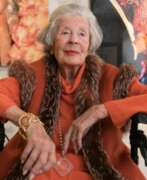

Marianne "Manni" Sayn-Wittgenstein-Sayn, real name Maria Anna Sayn-Wittgenstein-Sayn, née Mayr-Melnhof, is a dowager princess and Austrian photographer.
On her mother's side, Maria is a direct descendant of Empress Maria Theresa, which has opened all doors of aristocracy, business, politics and art to her. She was encouraged to take up photography by Lilly Palmer and Karl Lagerfeld after her husband died in 1962. Soon she was working with Frau im Spiegel magazine, then Bunte and Vogue.
Wherever she was - skiing in St. Moritz, on a yacht, at parties and weddings, in Europe and in America, Maria photographed everyone around her: Onassis and Maria Callas, Prince Charles, Gianni Agnelli, Romy Schneider, Luciano Pavarotti, the Queen Mother or King Juan Carlos. During her lifetime she photographed many world celebrities. By her centenary, Maria had more than 300,000 of her photographs in her archive.
Maria never took immodest or offensive photos of her friends. Princess Caroline of Monaco once joked, "You're not a paparazzi, you're a mamarazza," thus the nickname Marianne Sayn-Wittgenstein-Sayn was born.
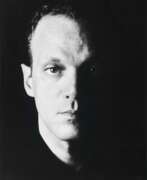

David Seidner was an American photographer. He is best known for his work in the fields of fashion and fine art photography.
Seidner began his career in photography at the age of 19, when he was hired by Andy Warhol to shoot for Interview magazine. He went on to work for many other major publications, including Vogue, Harper's Bazaar, and The New Yorker.
Throughout his career, Seidner's work was characterized by its meticulous attention to detail, sophisticated use of light and shadow, and a focus on capturing the unique qualities and personalities of his subjects. He also experimented with alternative photographic processes and was known for his technical expertise.
Seidner's work has been exhibited in galleries and museums around the world, and he received numerous awards and honors for his contributions to the field of photography.
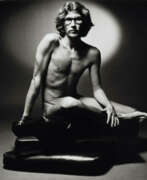

Jeanloup Sieff was a French photographer distinguished for his portraits, landscapes, and notably, his nudes. Born on November 30, 1933, in Paris, Sieff was known for his mastery in the use of black and white film, and his skillful use of wide-angle lenses and dodging techniques in the darkroom. His career spanned various fields, including fashion photography, where he was particularly prolific, contributing to major publications such as Elle.
Sieff's education at the École Vaugirard in Paris and the École Supérieure d’arts appliqués in Vevey, Switzerland, laid the foundation for a career that would be marked by an elegant integration of surrealism into his works, reminiscent of Man Ray's influence. He began as a freelance photojournalist in 1954 before later turning his lens towards fashion.
Sieff's photographs, characterized by an ethereal quality and a certain timelessness, continue to be celebrated in exhibitions and collections around the world. His work is not only a study of form and contrast but also an exploration of the subtle interplay of light and shadow.
For those interested in the evolution of photography, particularly in the realm of fashion and portraiture, Jeanloup Sieff’s work stands as an important bridge between the classic and the modern. His images remain a source of inspiration for photographers and a subject of admiration for collectors and art lovers globally.
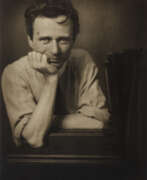

Edward Steichen was a Luxembourgish American photographer, painter, and curator, renowned as one of the most prolific and influential figures in the history of photography.
Steichen was credited with transforming photography into an art form. His photographs appeared in Alfred Stieglitz's groundbreaking magazine Camera Work more often than anyone else during its publication run from 1903 to 1917. Stieglitz hailed him as "the greatest photographer that ever lived".
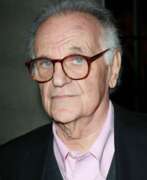

Bert Stern, real name Bertram Stern, is an American fashion photographer and documentary filmmaker.
His career began with the iconic and legendary Smirnoff Vodka advertising campaign in 1955. Using a well-equipped studio, Stern experimented with many of the latest techniques, including videotaping, screen printing, photo offset combinations and computer prints. His brilliant work made him a star in the advertising world, photographing advertising campaigns for Canon, Dupont, Pepsi-Cola, US Steel and Volkswagen brands. One of the high points of Bert Stern's career was working for Vogue in the 1960s.
Despite his drug addiction, the fashion photographer was sought after by Madison Avenue, Hollywood and the international fashion scene for decades.
Stern was one of the last photographers to shoot Marilyn Monroe in June and July 1962, six months before her death. Some of these photographs were published in Vogue magazine. In 1982, Bert Stern published The Last Sitting, a book that includes many of his more than 2,500 images, including those that Monroe did not like and were crossed out.
Stern directed and cinematographed the films Jazz on a Summer's Day (1959), A Date with an Angel (1987), and The Unknown Marilyn (2012).
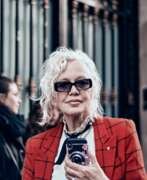

Ellen von Unwerth is a German photographer, director, and model.
She began her career as a photo model and later became a fashion and advertising photographer. Unwerth's work has been published in many fashion magazines, and she is best known for her playfully erotic shots of female pop musicians and models.
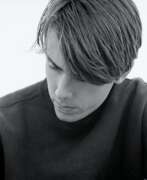

Chris von Wangenheim is a German fashion photographer and one of the most avant-garde image-makers of the 20th century.
In his relatively short career (1968 to 1981) Chris von Wangenheim created legendary images for all the leading fashion publications of the 70's including Vogue, Harper's Bazaar and Interview. He also created unforgettable ad campaigns for Valentino, Dior, Calvin Klein and Revlon.
At the height of his success, Chris died in a car accident in 1981 at the age of 39, leaving behind a tremendous legacy.
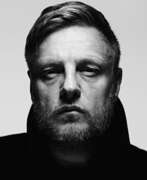

John Rankin Waddell, known as Rankin, is a British portrait photographer, fashion photographer, director, and publisher.
He works in fashion and portrait photography and has created portraits of many famous personalities of the world. Rankin also shoots music videos, documentaries, feature films, and commercials. He publishes his own photography magazines and books.
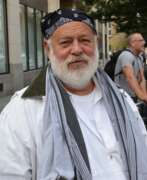

Bruce Weber is an American fashion photographer and occasional filmmaker. He has made ad campaigns for Calvin Klein, Ralph Lauren, Pirelli, Abercrombie & Fitch, Revlon, and Gianni Versace, and made work for Vogue, GQ, Vanity Fair, Elle, Life, Interview, and Rolling Stone magazines.
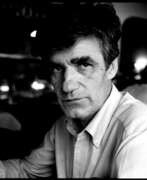

Lothar Wolleh is a German photographer.
Lothar Wolleh had a difficult fate: after the war he spent many years first in Allied captivity and then in the USSR, and only after returning to Berlin in 1956 was he able to resume his education at Lette-Verein, the school of photography, design and fashion.
As one of the most expensive and well-known photographers in the FRG of the 1960s, Wolleh worked successfully in fashion and advertising, collaborating with Deutsche Bundesbahn, Tchibo and Volkswagen. In 1969, Wolleh traveled around the Soviet Union for several months. Photographs taken on this trip were included in the illustrated book "The USSR - The Soviet State and its People", published in 1970.
But Wolleh's greatest fame and popularity came from his 109 portraits of contemporary artists. He began this series in the late 1960s and devoted all the following years of his life to it. His works are so recognizable and distinctive that they often became the reference portraits of the photographed artists.
